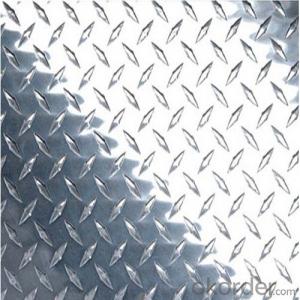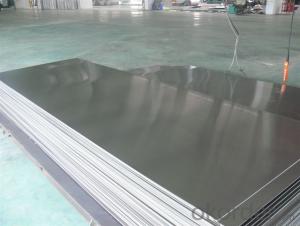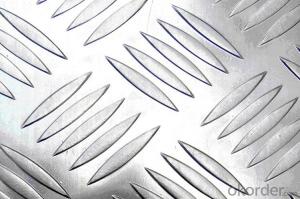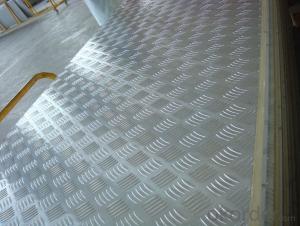3003-H22 Aluminum Diamond Plate
3003-H22 Aluminum Diamond Plate Related Searches
Led Light Bulbs For Ceiling Fixtures Led Lamps For Ceiling 42 In Ceiling Fan With Light Aluminum Coil Stock For Gutters Hole Saw For Aluminum Plate Aluminum Tread Plate For Trailer Bow Plate For Aluminum Boat Max Temp For Aluminum Foil Aluminum Foil For Key Fob Aluminum Foil For Hair FrizzHot Searches
China Black Aluminum Coil China Aluminum Coil Stainless Steel Manufacturers Aluminum Copper Coil Scrap Price High Pressure Laminate Manufacturers Europe Aluminum Ac Coil Scrap Price Aluminum Coil Price Per Pound ppr pipe manufacturers in saudi arabia Aluminum Coil Price Control Valve Manufacturers In Usa Home Depot Aluminum Coil Aluminum Coil Factory Roofing Sheets Manufacturers In Gujarat Outdoor Led Screen Manufacturers Wholesale Painted Aluminum Coil Aluminum Gutter Coil Wholesale Aluminum Coil Wholesale Wholesale Aluminum Coil Aluminum Roofing Coil Suppliers Aluminum Coil Stock Prices3003-H22 Aluminum Diamond Plate Supplier & Manufacturer from China
Okorder.com is a professional 3003-H22 Aluminum Diamond Plate supplier & manufacturer, offers integrated one-stop services including real-time quoting and online cargo tracking. We are funded by CNBM Group, a Fortune 500 enterprise and the largest 3003-H22 Aluminum Diamond Plate firm in China.Hot Products
FAQ
- Yes, aluminum sheets can be used for manufacturing door frames. Aluminum is a versatile material that is widely used in construction due to its strength, durability, and lightweight properties. It can be easily shaped, bent, and welded to create door frames of various sizes and designs. Additionally, aluminum is highly resistant to corrosion, making it suitable for both interior and exterior applications. Overall, using aluminum sheets for manufacturing door frames is a practical and popular choice in the construction industry.
- Aluminum sheets, in general, demonstrate resistance towards vibration. Being a lightweight and flexible material, aluminum possesses excellent damping characteristics, enabling it to effectively absorb and dissipate vibrations. Moreover, aluminum exhibits a high strength-to-weight ratio, ensuring its structural integrity remains intact under vibrating conditions. Consequently, aluminum sheets are highly favored in sectors like aerospace, automotive, and construction, where protection against vibrations is crucial. Nevertheless, it is important to acknowledge that the degree of vibration resistance may differ depending on various factors such as the thickness and alloy composition of the aluminum sheet, as well as the intensity and frequency of the vibrations.
- How do I calculate the weight of aluminum sheet? What is the density?
- First calculate the density of each aluminum plate, then calculate the volume, then the density is good, the volume is the weight
- Depending on the desired outcome and application, there are multiple techniques available to finish aluminum sheet edges. One option is deburring, which involves removing sharp or rough edges from the aluminum sheet. This can be accomplished with tools like files, sandpaper, or specialized deburring machines. Deburring not only enhances the appearance of the edges but also helps prevent potential injuries or accidents caused by sharp edges. Another method is chamfering, where a beveled edge is created on the aluminum sheet. This can be done using chamfering tools or by carefully filing or sanding the edges at a specific angle. Chamfering is often performed to improve the aesthetics of the aluminum sheet and make it easier to handle and assemble. Additionally, edge rounding is a technique that involves smoothing the edges of the aluminum sheet to give them a rounded or curved profile. Sanders, grinders, or specialized edge rounding machines can be used for this purpose. Edge rounding not only enhances the visual appeal of the aluminum sheet but also reduces the risk of injury from sharp edges. Moreover, anodizing is a widely used finishing method for aluminum sheet edges. It involves creating a protective oxide layer on the aluminum surface through an electrochemical process. Anodizing not only improves the corrosion resistance of the aluminum but also offers a range of color options for the edges, allowing for customization and improved aesthetics. Lastly, powder coating is another viable method for finishing aluminum sheet edges. It entails applying a dry powder onto the aluminum surface and then heating it to create a durable and decorative finish. Powder coating provides a wide variety of colors, textures, and finishes, allowing for customization and enhanced visual appeal. In conclusion, the choice of finishing method for aluminum sheet edges depends on factors such as the desired appearance, functionality, and application requirements. It is crucial to consider these factors and seek expert advice to determine the most suitable method for a specific project.
- Need to polish some small aluminum tubing, preferably to chrome like shine. What tools do I need? Thinking about buying 6 bench grinder, buffing? wheels and polish compound... Does it sound about right?
- I've done all sorts of tests on this topic and am using a polishing kit that was meant for plastic, but on aluminum, but after all the pads coarse to fine (wet) I found that it's better to use the last pad again but dry, rather than using the while liquid paste they propose. Polishing dry or wet makes a difference, and polishing Al is not the same as polishing a plastic. It's a tricky recipe, you can dull your Al easily, and I never got it shiny like a mirror so I want to see other answrs
- What is the difference between the alloy 1060H24 aluminum plate and the alloy 1100H24 aluminum plate?
- At present, most of the circulation in the market is 1050 and 1060 series. 1000 series aluminium plate to determine the minimum aluminum content in this series according to the amount of the last two Arabia figures, such as the 1050 series of the last two Arabia number 50, according to the international brand naming principles, content must reach 99.5% to the top for qualified products. China's aluminum alloy technology standard (gB/T3880-2006) is also clearly defined, 1050 aluminum content of 99.5%., the same reason, 1060 series aluminum plate aluminum content must reach more than 99.6%
- Yes, aluminum sheets can be used for sign making. Aluminum is a commonly used material for making signs due to its durability, lightweight nature, and resistance to rust and corrosion. It is a versatile material that can be easily cut, shaped, and printed on, making it suitable for various sign making applications.
- Can anyone tell me what to be careful of if you have aluminum wiring in your house. I was told that if the wall gets hot, I need to tighten the screws of the inside switch. Is this true and if I didn't, would it actually cause a fire in the wall. If this is true, how often does it loosen?
- Several answers are very good but the one thing that evrybody failed to mention is each device (switch, recept, fixture, etc.) must be listed to use with AL wire. This is the biggest problem I find. Home owners run out to the local hardware and pick up a new device and do not check the listings. The copper wire pig tail is an option but once again you must use a wire nut that is listed for both AL CU wiring. Most are a dark purple in color. Electrical Inspector














































